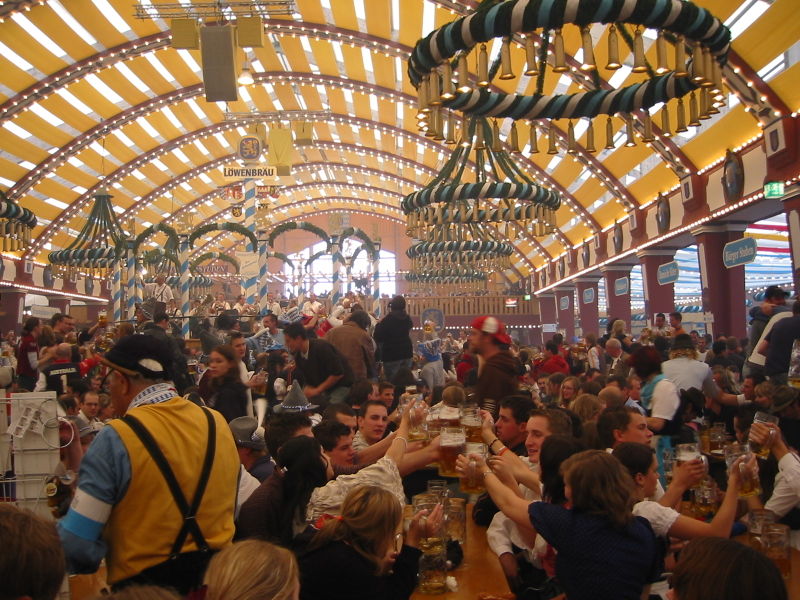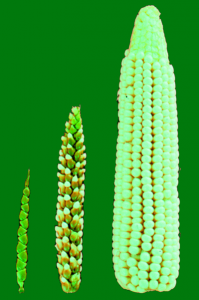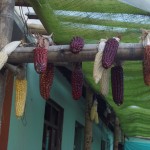 Did the prehistoric equivalent of a great big, beery, boozy party give rise to some of the world’s earliest civilizations? That sounds about as likely as Sarah Palin rolling up her sleeves and deciphering the Dead Sea Scrolls. And yet, that idea–beer as one of the original jet fuels of civilization–is gathering momentum among archaeologists, and not just when they are in their cups.
Did the prehistoric equivalent of a great big, beery, boozy party give rise to some of the world’s earliest civilizations? That sounds about as likely as Sarah Palin rolling up her sleeves and deciphering the Dead Sea Scrolls. And yet, that idea–beer as one of the original jet fuels of civilization–is gathering momentum among archaeologists, and not just when they are in their cups.
This past week Simon Fraser University archaeologist Brian Hayden, suggested in an interview that the hunting and gathering Natufians first gathered wild grain in the Middle East 11,500 years ago in order to brew beer for ancient community bashes known as feasts. Having enough beer on hand to get people pleasantly plastered, would “impress guests, make them happy, and alter their attitudes favorably toward hosts,” Hayden observed. And in time, the mounting popularity of such partying could have motivated the Natufians to plant grain and become farmers–major milestones on the road to civilization. At least, that’s the essence of Hayden’s idea.
Hayden is a theorist with a big reputation, and many archaeologists think he’s on to something here. The early Natufians went out of their way to collect wild grain, trekking as much as 60 miles from their base camps to reach a grassland where it grew. Would people really go to so much trouble just to sprinkle a little grain in their stews? It doesn’t seem plausible to me. But to make a frothy golden drink that produces a noticeable high? Now you’re talking.
 Other researchers have suggested something similar for corn in the New World. The plump yellow cobs we see in today’s farmers’ markets bear little resemblance to the measly hard-kerneled seed head (far left in image) that attracted Central Americans’ attention nearly 7000 years ago. So why would anyone invest so much time in sowing, watering, weeding, harvesting and storing such a paltry crop? Some archaeologists think they did so mainly to brew an alcoholic drink. The sweet juice that flows through corn’s stalks and stems makes a fine maize-stalk beer. Indeed people still quaff this beer today in Central America and as far south as Bolivia and Peru.
Other researchers have suggested something similar for corn in the New World. The plump yellow cobs we see in today’s farmers’ markets bear little resemblance to the measly hard-kerneled seed head (far left in image) that attracted Central Americans’ attention nearly 7000 years ago. So why would anyone invest so much time in sowing, watering, weeding, harvesting and storing such a paltry crop? Some archaeologists think they did so mainly to brew an alcoholic drink. The sweet juice that flows through corn’s stalks and stems makes a fine maize-stalk beer. Indeed people still quaff this beer today in Central America and as far south as Bolivia and Peru.
 Did corn-beer help launch civilization in the New World? I don’t think anyone has looked into this in any depth. But what we do know is that a slightly different type of corn beer, made in later times from corn kernels and dubbed chicha, played a huge part in the rise of the Inca Empire, a hospitality state if ever there was one. To reward Inca subjects and keep everyone happy 500 years ago, Inca kings threw huge annual celebrations. And for these, retainers brewed “millions of liters of chicha that were consumed annually,” writes archaeologist Justin Jennings.
Did corn-beer help launch civilization in the New World? I don’t think anyone has looked into this in any depth. But what we do know is that a slightly different type of corn beer, made in later times from corn kernels and dubbed chicha, played a huge part in the rise of the Inca Empire, a hospitality state if ever there was one. To reward Inca subjects and keep everyone happy 500 years ago, Inca kings threw huge annual celebrations. And for these, retainers brewed “millions of liters of chicha that were consumed annually,” writes archaeologist Justin Jennings.
Those Inca kings sound like rulers after my own heart–a lot more fun than the Tea Partiers.
Images: Upper, Octoberfest 2005 (Andreas Steinhoff) ; Middle, Teosinte to modern corn ( John Doebley), and Lower, Corn at a Chicheria, Ecuador (Heather Pringle).
I knew I was doing something right …
Yes, a beer or two a day, keep the barbarians away…Or something like that.
I enjoy your articles but could do without the snide little political asides about Palin, teapartiers, etc. There is enough of that elsewhere. Stick to your field.